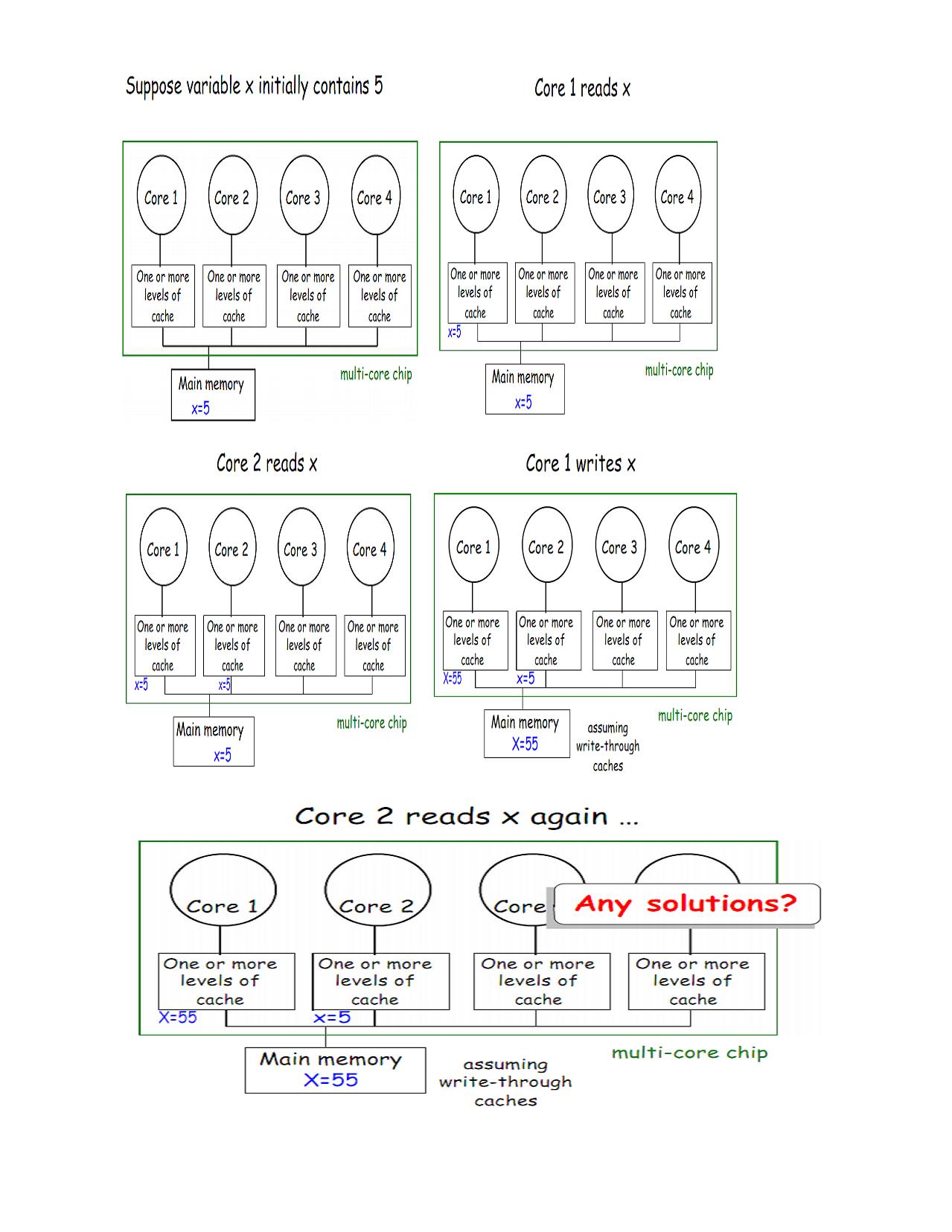CSC/ECE 506 Spring 2011/ch7 ss: Difference between revisions
| Line 7: | Line 7: | ||
Here, by cache, we mean '''CPU cache'''. These are the small memories on or close to the CPU can operate faster than the much larger main memory.Cache coherency refers to the consistency of data stored in local caches of a shared resource. The following scenario shows the problems arising from inconsistent data when clients maintain caches of a common memory resource: | Here, by cache, we mean '''CPU cache'''. These are the small memories on or close to the CPU can operate faster than the much larger main memory.Cache coherency refers to the consistency of data stored in local caches of a shared resource. The following scenario shows the problems arising from inconsistent data when clients maintain caches of a common memory resource: | ||
[[Image:CCpic2.jpg | [[Image:CCpic2.jpg|frame|Cache coherence]] | ||
Revision as of 23:38, 12 March 2011
Though the migration from uniprocessor system to multiprocessing systems is not new, the world of parallel computers is undergoing a continuous change. Parallel computers, which started as high-end super-computing systems for carrying out huge calculations, are now ubiquitous and are present in all mainstream architectures for servers, desktops, and embedded systems. In order to design parallel architectures to meet programmer's needs and expectations more closely, exciting and challenging changes exist. The three main areas which are being considered by scientists today are: cache coherence, memory consistency and synchronization.
This article discusses these three issues and how they can be solved efficiently to meet programmer's requirements. A related topic - TLB coherence - is also dealth with. The wiki supplement also addresses the challenges that Peterson's algorithm demonstrates.
Cache Coherence
Here, by cache, we mean CPU cache. These are the small memories on or close to the CPU can operate faster than the much larger main memory.Cache coherency refers to the consistency of data stored in local caches of a shared resource. The following scenario shows the problems arising from inconsistent data when clients maintain caches of a common memory resource:
